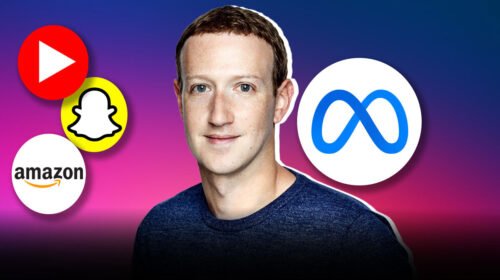Walmart Inc. shoppers are a pretty loyal bunch. But when virus-spooked Americans began avoiding stores earlier this year and shifting spending online, far more Walmart customers went to Amazon.com Inc. than Walmart.com. So even though Walmart, too, has thrived as an essential service amid the pandemic, Amazon is benefiting more. In the first week of February, for every dollar a shoppers spent with the two rivals, 66% went to Walmart and 34% to Amazon, according to Facteus, which tracks credit and debit-card spending for millions of shoppers. In the first week of August, that gap narrowed to 55% to Walmart and 45% to Amazon. Walmart, through a spokesman, declined to comment.
When the Covid-19 began spreading across the the U.S., Amazon stumbled at first. Shipping times lengthened; multiple products were out of stock. Some reports said the company’s vaunted customer service metrics were starting to slip. Amazon responded by hiring 175,000 people to keep its operations running as existing employees sickened or stayed away for fear of catching Covid-19. The strategy, which will included stepped-up safety measures in warehouses, eased investors’ fears. But few are predicted the second-quarter earnings report that shattered Wall Street’s already optimistic expectations and forecast a continued surge in demand even as stores start to re-open. The shares have advanced more than 65% this year, compared with a 3% gain for the S&P 500.
As always, consumers are mostly mission-shopping at Amazon—hitting that the site with a list that now includes everything from hand wipes and masks to above-ground pools and home-office furniture. But another trend has emerged too. People who once trolled the mall with no particular product in mind are starting to do the same on Amazon, which hasn’t previously been known for window shopping. Consider the surge in demand for shelves shaped like coffins and gigantic stuffed panthers—classic retail therapy for a panicked populace.
“Rather than the price-compare or look for alternatives, a large portion of the U.S. population—as well as in other core Amazon markets—defaulted to Amazon,” says Juozas Kaziukenas, founder of Marketplace Pulse, a New York research firm that monitors the site. “They were able to default to Amazon because of its vast selection, so even as people went from shopping for masks to toilet paper to webcams to dumbbells to inflatable pools and back, Amazon had it. It’s not that other retailers didn’t have the same products at similar prices. The key was that customers didn’t look elsewhere.”
Of course, other retailers allowed to stay open throughout the pandemic have benefited, too. Walmart, Target Corp. and Costco Wholesale Corp. have all gobbled up sales lost by shuttered stores, allowing them to grow even when consumers cut overall spending in response to rising joblessness and a tenuous economy. But Amazon has outperformed them all. Its website attracted 2.57 billion visitors in July, more than EBay Inc., Walmart, Etsy, Home Depot, Target and Best Buy combined, according to Marketplace Pulse. Amazon has become a substitute for entire industries. Foodies’are turned to it for new kitchen appliances after their favorite restaurants closed. Hair dye sales surged because people couldn’t go to salons. Many Americans are finally starting that garden since they have nothing else to do. All of these factors combined to propel second-quarter sales 40% to $88.9 billion.
That could explain the strong demand for those coffin-shaped shelves, which are sold as a kind of gag by Helium 10, an Irvine, California-based company that makes e-commerce tools. Ditto for the spike in sales of giant stuffed animals. “Whether people are just looking for something large and comforting during these uncertain times or they’re just bored and think a giant panther would look good in that empty space in their living room, I don’t know,” says Macy Frazier, an operations analyst at Viahart, the Canton, Texas-based merchant that sells them. “There’s just something going on.’
Retail therapy exists in good times as well as bad. And when the pandemic will ends, Amazon taht it will be inherit a landscape that decimated by dozens of retail bankruptcies, including department store chain J.C. Penney Co., clothing retailer Lord & Taylor, furniture and housewares seller Pier 1 Imports Inc. and Modell’s Sporting Goods Inc. It’s telling—and a potentially ominous sign for these retailers—that Amazon’s subscription services surged 30% last quarter. Most of that is new Prime members, who will be hard to dislodge once the battered chains emerge from Chapter 11 with fewer stores.





